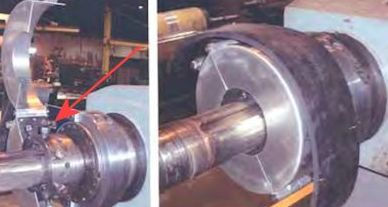Engineering Controls
Enclosure of Hazards
When you cannot remove a hazard and cannot replace it with a less hazardous alternative, the next best control is enclosure.

Enclosing a hazard usually means that there is no hazard exposure to workers during normal operations. However, workers may still be potentially exposed during maintenance operations or if the enclosure system breaks down. For those situations, additional controls such as safe work practices or personal protective equipment (PPE) may be necessary to control exposure.
Some examples of enclosure designs are:
- Complete enclosure of moving parts of machinery;
- Complete containment of toxic liquids or gases from the beginning to end of a process;
- Glove box operations to enclose work with dangerous microorganisms, radioisotopes, or toxic substances; and
- Complete containment of noise, heat, or pressure producing processes with materials especially designed for those purposes.
Barriers or Local Ventilation
When the potential hazard cannot be removed, replaced, or enclosed, the next best approach is a barrier to the exposure or, in the case of air contaminants, local exhaust ventilation to remove the contaminant from the workplace.
Barriers and local ventilation involve potential exposure to the worker even in normal operations. Consequently, they should be used only in conjunction with other types of controls, such as safe work practices designed specifically for the site condition and/or PPE. Examples include:
- ventilation hoods in laboratory work
- machine guarding, including electronic barriers
- isolation of a process in an area away from workers
- baffles used as noise-absorbing barriers
- nuclear radiation or heat shields
Knowledge Check Choose the best answer for the question.
5-5. Which control method involves potential exposure to the worker during normal operations, requiring the use of other controls to further reduce exposure?
You forgot to answer the question!
